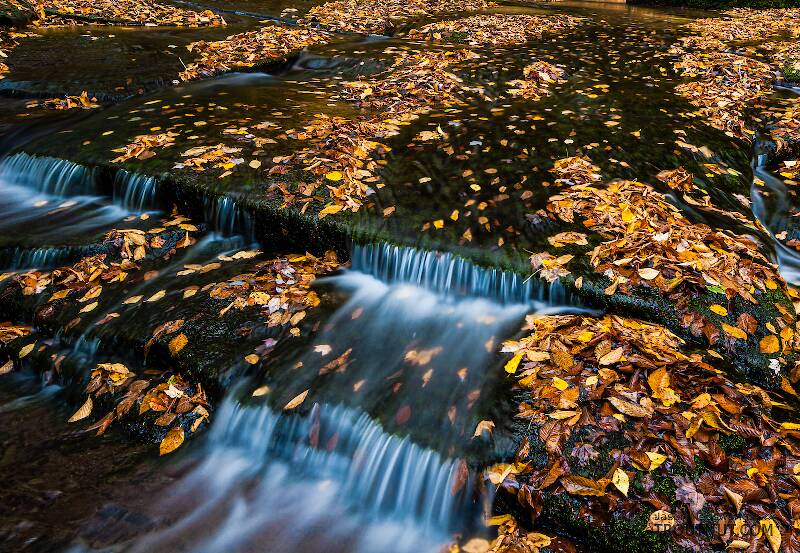
Hex Mayflies
Hexagenia limbata
The famous nocturnal Hex hatch of the Midwest (and a few other lucky locations) stirs to the surface mythically large brown trout that only touch streamers for the rest of the year.
Featured on the forum

This is a striking caddis larva with an interesting color pattern on the head. Here are some characteristics I was able to see under the microscope, but could not easily expose for a picture:
- The prosternal horn is present.
- The mandible is clearly toothed, not formed into a uniform scraper blade.
- The seems to be only 2 major setae on the ventral edge of the hind femur.
- Chloride epithelia seem to be absent from the dorsal side of any abdominal segments.
Based on these characteristics and the ones more easily visible from the pictures, this seems to be Grammotaulius. The key's description of the case is spot-on: "Case cylindrical, made of longitudinally arranged sedge or similar leaves," as is the description of the markings on the head, "Dorsum of head light brownish yellow with numerous discrete, small, dark spots." The spot pattern on the head is a very good match to figure 19.312 of Merritt R.W., Cummins, K.W., and Berg, M.B. (2019). The species ID is based on Grammotaulius betteni being the only species of this genus known in Washington state.
- The prosternal horn is present.
- The mandible is clearly toothed, not formed into a uniform scraper blade.
- The seems to be only 2 major setae on the ventral edge of the hind femur.
- Chloride epithelia seem to be absent from the dorsal side of any abdominal segments.
Based on these characteristics and the ones more easily visible from the pictures, this seems to be Grammotaulius. The key's description of the case is spot-on: "Case cylindrical, made of longitudinally arranged sedge or similar leaves," as is the description of the markings on the head, "Dorsum of head light brownish yellow with numerous discrete, small, dark spots." The spot pattern on the head is a very good match to figure 19.312 of Merritt R.W., Cummins, K.W., and Berg, M.B. (2019). The species ID is based on Grammotaulius betteni being the only species of this genus known in Washington state.

Troutnut is a project started in 2003 by salmonid ecologist Jason "Troutnut" Neuswanger to help anglers and
fly tyers unabashedly embrace the entomological side of the sport. Learn more about Troutnut or
support the project for an enhanced experience here.
Chironomidae (Midge) True Fly Adult Pictures
One of the only real benefits I've got from my rearing aquarium so far is that I've had quite a variety of midges emerge, giving me a chance to photograph these fragile little insects which are otherwise really hard to transport in photogenic form. This one recovered from being gassed and flew away before I could photograph it on the ruler, but it was very small, around 1.5mm.
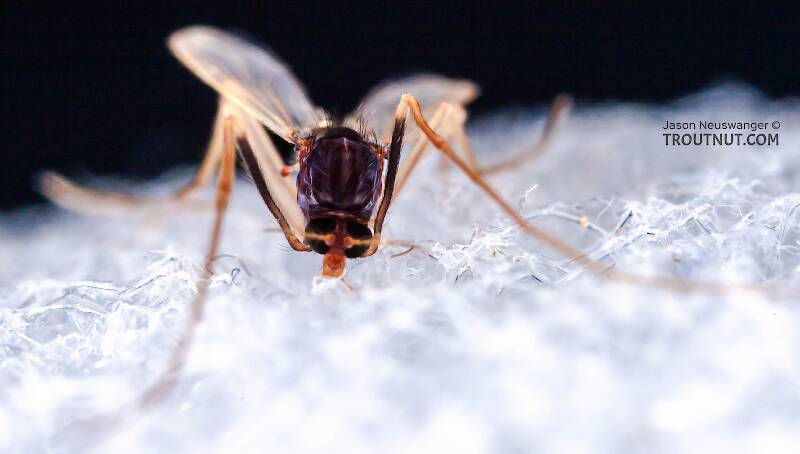
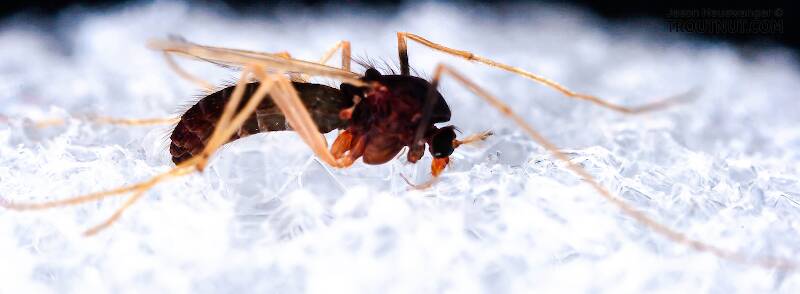
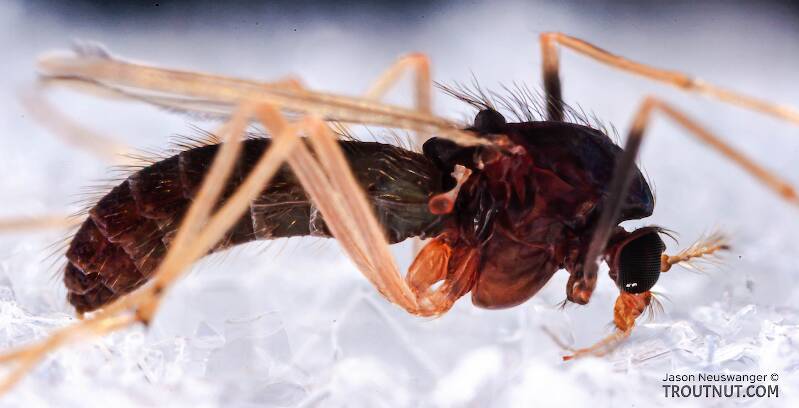
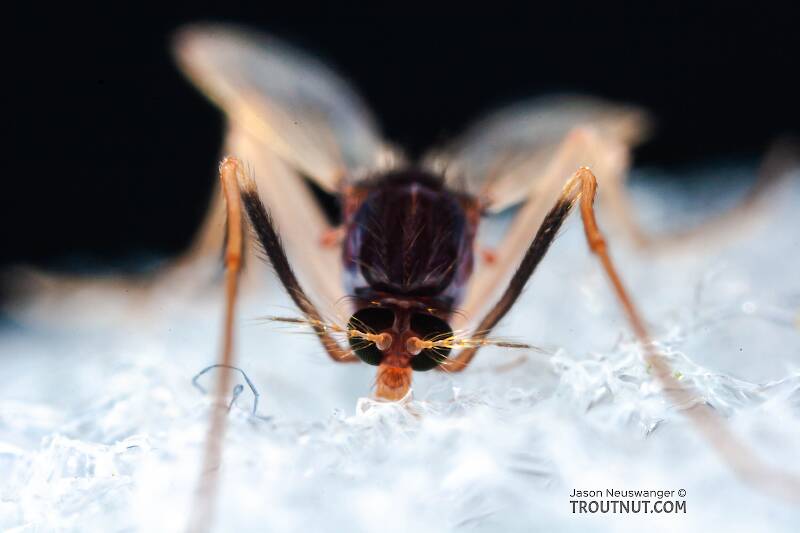
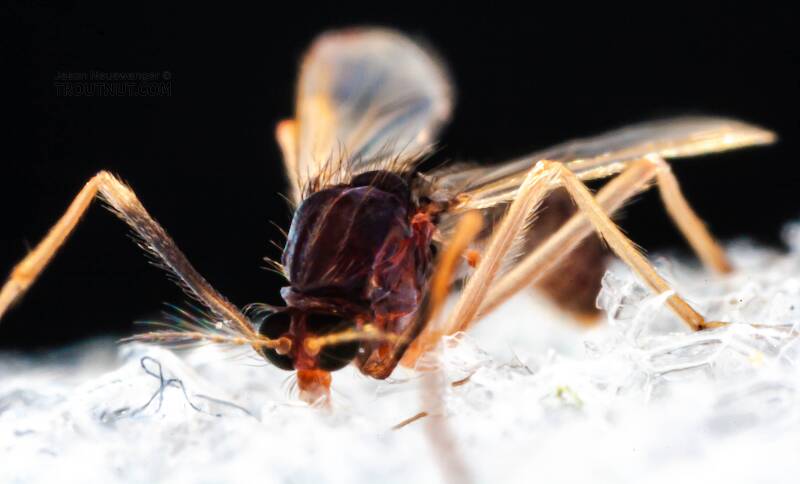
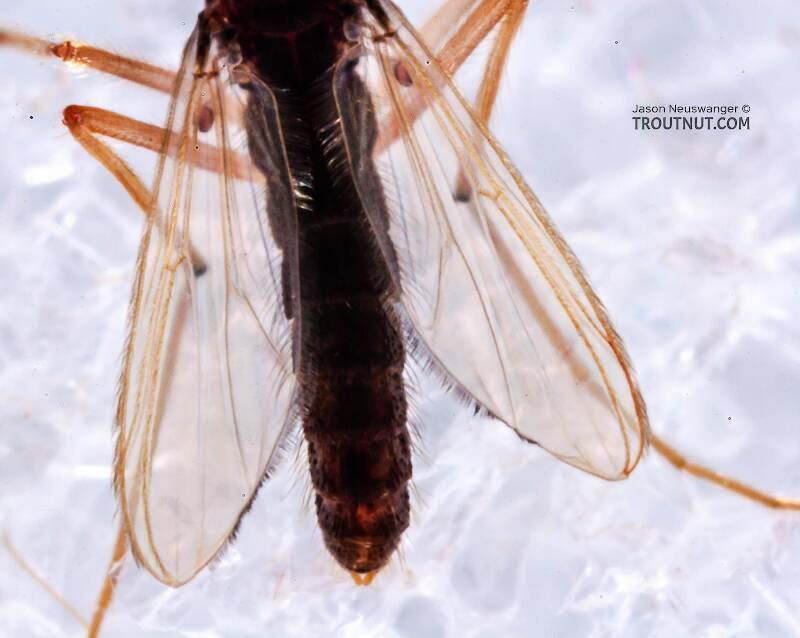
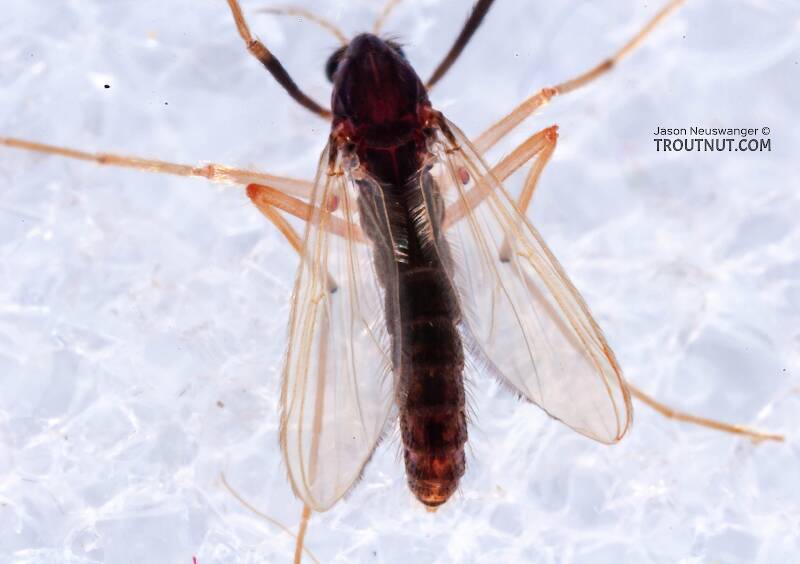
This true fly was collected from Mystery Creek #62 in New York on April 23rd, 2007 and added to Troutnut.com by Troutnut on April 25th, 2007.
Discussions of this Adult
Cultivating Chronomidae
3 replies
Posted by Gatruk on Jan 29, 2010
Last reply on Jan 30, 2010 by Taxon
I am searching to find effective ways of cultivating chronomidaes, what kind of best cheap an effective medium that I should use , what are there lifecycles . lifespans an their behaviors. Thanks for letting me to join the forum.
Start a Discussion of Adult
References
- Merritt R.W., Cummins, K.W., and Berg, M.B. 2019. An Introduction to the Aquatic Insects of North America (Fifth Edition). Kendall/Hunt Publishing Company.
Chironomidae (Midge) True Fly Adult Pictures
Collection details
Location: Mystery Creek #62, New York
Date: April 23rd, 2007
Added to site: April 25th, 2007
Author: Troutnut
Date: April 23rd, 2007
Added to site: April 25th, 2007
Author: Troutnut

